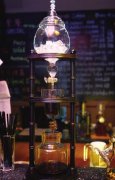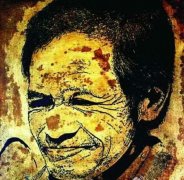Coffee fundamentals Coffee with Coffee Zone
There are more than 60 coffee producing countries in the world, most of which are located in the tropics and subtropics between the Tropic of Cancer (23 °26 'north and south). This coffee growing area is called "coffee belt (Coffee Belt)" or "coffee area (Coffee Zone)". The annual average temperature of the coffee belt is above 20 ℃, because the coffee tree is a tropical plant and cannot grow normally if the temperature is below 20 ℃.

Coffee growing areas are concentrated in North Africa, Central and South America, Southeast Asia and northern Oceania. There are about 40 species of coffee plants, but the only ones that can produce coffee beans of commercial value are Arabica, Robusta and Liberian. these three species are called the "three native species of coffee".

It is generally believed that the coffee produced in the highlands is of better quality. Coffee-producing countries in Central America will use "elevation" as the grading standard because of the mountains that cross the middle of the continent. For example, SHB in Guatemala (abbreviated from the prefix Strictly Hard Bean), the highest of the seven grades is called SHB, indicating that its producing area is about 1370 meters above sea level.

Arabica coffee beans are mainly grown in South America (except parts of Argentina and Brazil), Central America, Africa (Kenya, Ethiopia and other places, mainly East African countries), Asia (including parts of Yemen, India and Papua New Guinea). The main producers of Robusta coffee beans are Indonesia, Vietnam and West African countries centered on C ô te d'Ivoire, Algeria and Angola.

Important Notice :
前街咖啡 FrontStreet Coffee has moved to new addredd:
FrontStreet Coffee Address: 315,Donghua East Road,GuangZhou
Tel:020 38364473
- Prev

Boutique Coffee the mysterious veil of ice-drop coffee
According to the Guardian website on September 9, this summer, ice drop coffee is leading the fashion trend, and this time-honored brewing method provides coffee drinkers with a slightly different fresh taste. You can easily try it at home. But why are baristas so excited? coffee developed at an alarming rate in 2014. Dripping coffee and Philharmonic coffee are all the rage. This summer, English coffee
- Next

Coffee Creative artists skillfully use coffee grounds to create oil paintings
Coffee is covered in Baguio City, Philippines. A new artist named Navarro uses coffee grounds left over from people's coffee as oil paints for portraits to produce amazing works of art. After doing detailed field research, Vincent recycled discarded coffee grounds from a large gourmet coffee shop and began his artistic journey of turning waste into treasure.
Related
- Beginners will see the "Coffee pull flower" guide!
- What is the difference between ice blog purified milk and ordinary milk coffee?
- Why is the Philippines the largest producer of crops in Liberia?
- For coffee extraction, should the fine powder be retained?
- How does extracted espresso fill pressed powder? How much strength does it take to press the powder?
- How to make jasmine cold extract coffee? Is the jasmine + latte good?
- Will this little toy really make the coffee taste better? How does Lily Drip affect coffee extraction?
- Will the action of slapping the filter cup also affect coffee extraction?
- What's the difference between powder-to-water ratio and powder-to-liquid ratio?
- What is the Ethiopian local species? What does it have to do with Heirloom native species?

